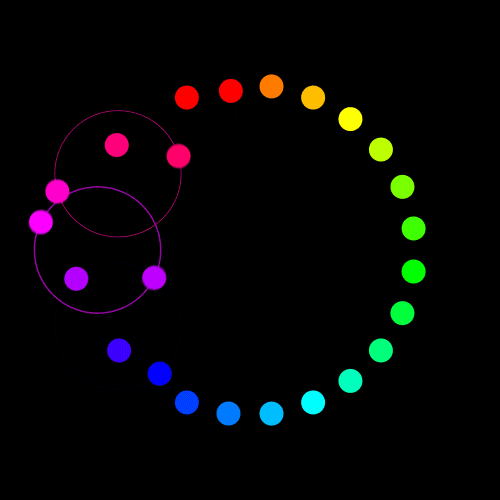
Refabricating city:a reflection:Hong Kong-Shenzhen bi-city biennale of urbanism
副标题:无
作 者:architecture
分类号:
ISBN:9780193963085
微信扫一扫,移动浏览光盘
简介
This publication is at once a record of and a reflection on the Biennale. The book consists of four main parts. The first part Forum features interviews with Ralph Lerner, Chang Yung-ho, Rocco Yim and Wang Weijen, as well as Leo Lee's interpretation, Zhu Tao's and Ruan Ching-Yue's critiques, Liu Jiakun's and Huang Sheng Yuan's reflections on the Biennale. We also invited twenty participants of the Biennale for their feedbacks, and the first members of the Steering Committee to share with us the origins of the Biennale. These various texts, by commenting on common issues such as the uniqueness of Hong Kong's urban spaces vs. the ordinariness of her architecture, the role and future of the Hong Kong-Shenzhen Biennale, historical buildings and the meaning of public space, provide us valuable references for strategizing on the future of our architecture and city. The second part Exhibition, which makes up the main content of this book, presents our visual record of all exhibits. The third part Venue and Event documents our understanding of the Central Police Station, the design and implementation, as well as the curatorial planning and program. The fourth part is Lecture and Dialogue, which includes five main lectures and six dialogue events covering important topics related to the Biennale theme: refabrication and regeneration, memory and future, the global and the local, Hong Kong and Shenzhen, urbanism and landscape.
In the course of editing this book, the 2009 Biennale has already launched in West Kowloon, and the direction of Central Police Station Compound and West Kowloon Planning has also became clearer. At the same time, citizen protests on the development of high-speed railway start to grip the attention of the Hong Kong media. This reminds us of the situation on the eve of the Biennale opening two years ago, when conservation activists and the media questioned the usage of historical buildings as the venue for an architecture biennale. In dealing with this crisis, we came to realize that what we were faced with were our frustrated citizens, who suffered chronically under the hegemony of procedural rationality, and who just had the urban memory of Star Ferry and Queen's Pier wiped out. We requested our exhibiters to amend their exhibit design in the last minute to leave intact any of the internal furnishings, not because we shared the nostalgic attitude of treating historical architecture as untouchable antiques, but because we believed this Biennale also took part in the urban process of shaping our public space: it was an urban process of consensus-building and negotiation for a shared urban value.
If every biennale could become an urban process of what Michel de Certeau theorized as the "practice of everyday life", it could certainly in many ways inspire our cultural imagination on space. Through the exhibits' interpretation and appropriation of a walled colonial prison compound, and the visitors' occupation of prison cells and courtyards, the 2007 Biennale engendered a double reading between architectural display and urban history. By setting up temporary exhibition structures and landscape in West Kowloon, the 2009 Biennale, opened up the public's experience, reflection and projection of this future cultural space. By bringing our citizens into the exhibition venue, it is hoped that the Biennales will lead them to look into the spatial possibilities of the architecture: In what form should the public space take? What kind of cultural forum should it provide? What sort of strategy on public space will the government's new proposals offer?
Whether it is the Biennale at Central Police Station or at the West Kowloon, through an urban processes of exploration in public space and participation in cultural forums, would our citizens be able to generate discourses to counter or negotiate with the procedural rationality, therefore be ready to state clearly what is needed for our city is more than an iconic landmark, but a public realm that allows everyone to interchange on all levels?
目录
序言
前言
論壇
再織城市雙年展的主題宣言∕王維仁
訪問亮華飛∕亮華飛
訪問張永和∕張永和
訪問嚴迅奇∕嚴迅奇
與策展人王維仁對談∕朱濤 王維仁
深港(不)一體化∕朱濤
一魚兩吃的寓言再譯∕阮慶岳
參展印象∕劉家琨
大聲說出別人的夢想∕黃聲遠
動感之都的漫遊者∕李歐梵
關於“再織城市”的展覽策略與主題∕鍾宏亮
平台:20名建築師的反思
香港雙年展的由來:圓桌討論
展覽
總部大樓.A座∕城市織理
營房大樓.衛生樓∕建築織理
中央裁判司署.通道∕模型香港,連繫城市
監獄E倉.南廣場∕轉化織理
監獄F倉∕構想織理
主廣場.監獄B,D,E倉∕平行展覽
雙年展藝術廊
場地∕活動
展場歷史與建築再織∕鍾宏亮
展場設計∕陳建國
雙年展開幕
從雙年展到雙年節∕馮景行
對話∕講座
對話一:城市再生∕再織城市
對話二:城市記憶∕城市未來
對話三:全球化∕地域化
對話四:平行空間:物質再生
對話五:都市空間∕都市文化
對話六:景觀都市∕都市景觀
城市空虛論壇
講座 山本理顯:創造建築=創造未來
講座 承孝相:都市文化景觀的象徵
講座 張永和:一個項目
講座 大野秀敏:纖維城市-為收縮設計
統計∕香港策展團
< TOP>
前言
論壇
再織城市雙年展的主題宣言∕王維仁
訪問亮華飛∕亮華飛
訪問張永和∕張永和
訪問嚴迅奇∕嚴迅奇
與策展人王維仁對談∕朱濤 王維仁
深港(不)一體化∕朱濤
一魚兩吃的寓言再譯∕阮慶岳
參展印象∕劉家琨
大聲說出別人的夢想∕黃聲遠
動感之都的漫遊者∕李歐梵
關於“再織城市”的展覽策略與主題∕鍾宏亮
平台:20名建築師的反思
香港雙年展的由來:圓桌討論
展覽
總部大樓.A座∕城市織理
營房大樓.衛生樓∕建築織理
中央裁判司署.通道∕模型香港,連繫城市
監獄E倉.南廣場∕轉化織理
監獄F倉∕構想織理
主廣場.監獄B,D,E倉∕平行展覽
雙年展藝術廊
場地∕活動
展場歷史與建築再織∕鍾宏亮
展場設計∕陳建國
雙年展開幕
從雙年展到雙年節∕馮景行
對話∕講座
對話一:城市再生∕再織城市
對話二:城市記憶∕城市未來
對話三:全球化∕地域化
對話四:平行空間:物質再生
對話五:都市空間∕都市文化
對話六:景觀都市∕都市景觀
城市空虛論壇
講座 山本理顯:創造建築=創造未來
講座 承孝相:都市文化景觀的象徵
講座 張永和:一個項目
講座 大野秀敏:纖維城市-為收縮設計
統計∕香港策展團
< TOP>
Refabricating city:a reflection:Hong Kong-Shenzhen bi-city biennale of urbanism
- 名称
- 类型
- 大小
光盘服务联系方式: 020-38250260 客服QQ:4006604884
云图客服:
用户发送的提问,这种方式就需要有位在线客服来回答用户的问题,这种 就属于对话式的,问题是这种提问是否需要用户登录才能提问
Video Player
×
Audio Player
×
pdf Player
×


